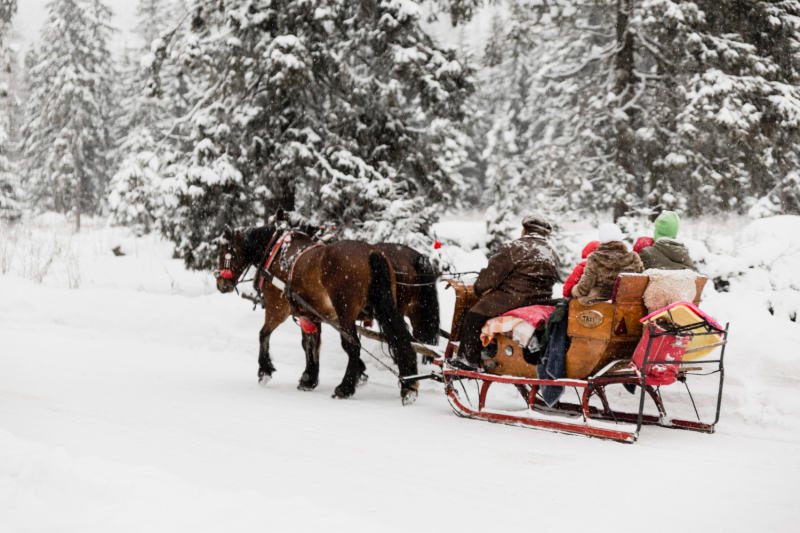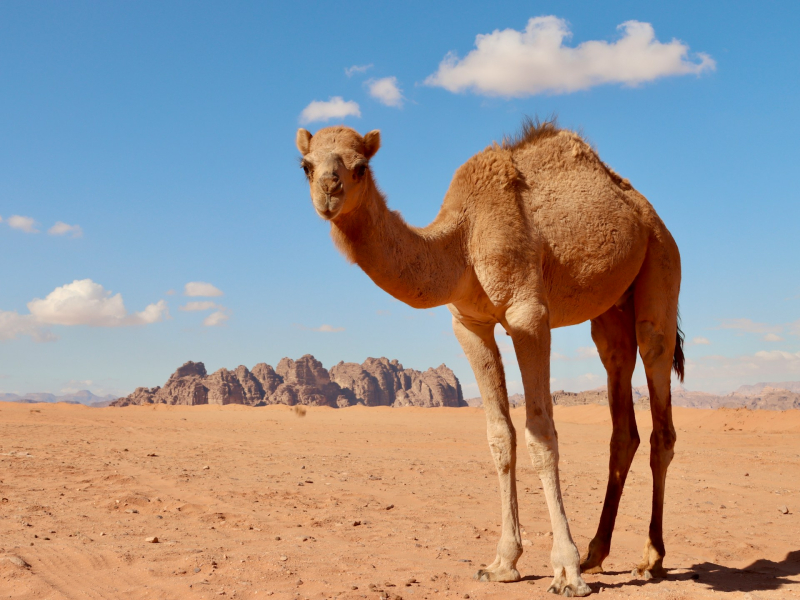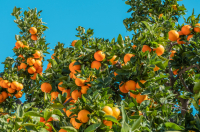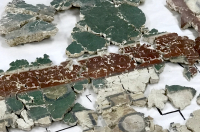Verblyud (Camel)
When is a camel not a camel, but a whole other creature entirely? When it comes to the names of exotic animals, etymology is rich with fascinating stories of mix-ups and “broken telephones.” Just take the Russian word for “camel,” верблюд, which appears as early as in the 12th century in the letopis The Tale of Bygone Years.
Initially spelled as вельблуд (vel’blyud), it is a borrowed form of ulbandus, a word for the same animal in Gothic, the extinct language of East Germanic tribes. Here’s where it gets interesting, though: the Goths themselves took their name for “camel” from the Latin elephantus, meaning “elephant”! Clearly, somewhere along the way, one hardy, towering animal got mixed up with another.
Vokzal (Rail terminal)
The Pavlovsk train station as it appeared in 1862. Artwork by Adolf Charlemagne. Credit: Wikimedia Commons (public domain image)
St. Petersburg, as you may know from our previous writing, has a total of five вокзал-s, or rail terminals, which serve as key hubs for trains arriving from every direction. But where does this word, which even sounds a little like the rattle of a railcar, come from? To find out, one must go back to 1838, when Russia’s first-ever railway connected St. Petersburg to the town of Pavlovsk. The terminus station there was a fancy establishment that not only received passengers, but also hosted concerts and galas for the nobility.
It didn’t take long for comparisons to be drawn with London’s Vauxhall Gardens, which were then renowned across Europe for their refinement and prestige. Over time, the epithet – which also merged with the word зал (zal – “hall”) – became so ubiquitous that it began to apply to all major railway stations. Sadly, the original vokzal did not make it through World War II. However, it was recently announced that an exact replica will be constructed by 2027 to coincide with Pavlovsk’s 250th anniversary of founding.
Slantsy (Flip-flops)
Credit: Alexey Demidov (@theplanetspeaks) via Pexels (pexels.com)
The town of Slantsy in the Leningrad Oblast is one of many Soviet-era settlements named rather bluntly after its main export: in this case, oil shales – сланцы (slantsy). However, it was another product that made this word a household name. In the 60s, a plant was established here to produce various items made out of synthetic rubber, one such product being flip-flops.
Since the name of the town was stamped onto each pair, most consumers, being unfamiliar with rather niche geological terminology, simply assumed it was the term for this particular kind of footwear. And in a remarkable example of a self-fulfilling prophecy, that’s exactly what it became! Nowadays, Slantsy-made flip-flops are hardly a hot commodity, but the word lives on as the catch-all for any sort of rubber slipper you’d wear to the pool or the beach.
Sani (Sleigh)
Credit: Freepik (freepik.com)
The sleigh is not only an iconic image of Russian culture in general – it’s also one of the key attributes of Ded Moroz, the Slavic colleague of Santa Claus. But this year, there’s an added connection between this word and the winter holidays! How, you ask? Well, it just so happens that 2025 is the Year of the Snake and the word сани, in fact, is a descendant of сань (san’), a Proto-Slavic word meaning “snake,” “serpent,” or even “dragon.”
Evidently, it became associated with the sleigh due to the winding trails left by such vehicles on the snow. In a reverse example, the word for runners (the “skis” found at the bottom of a sleigh), полозья (polozya), has roots in the Proto-Slavic verb for "crawl" or "slide", but has eventually come to mean “reptile” in the Czech and Slovak languages.
For more insights, tips, and resources for Russian language learners, click on the Russian Language tag.




